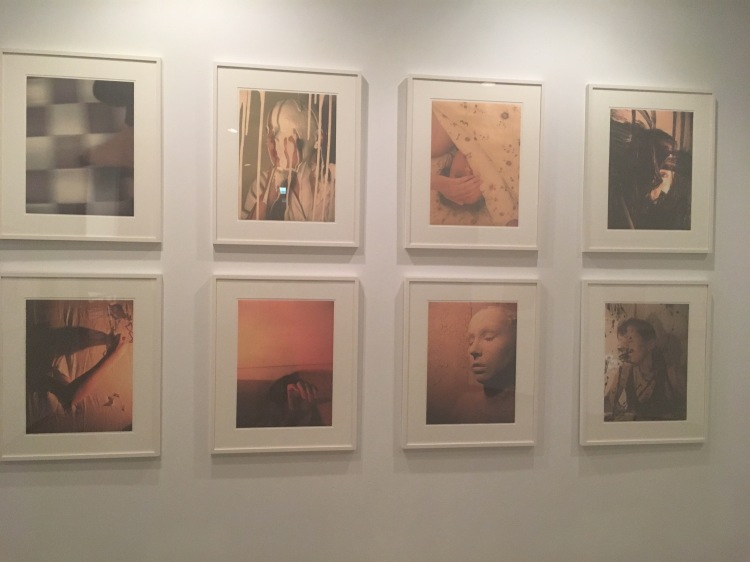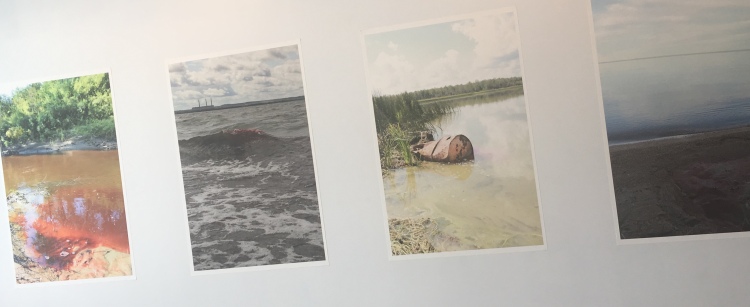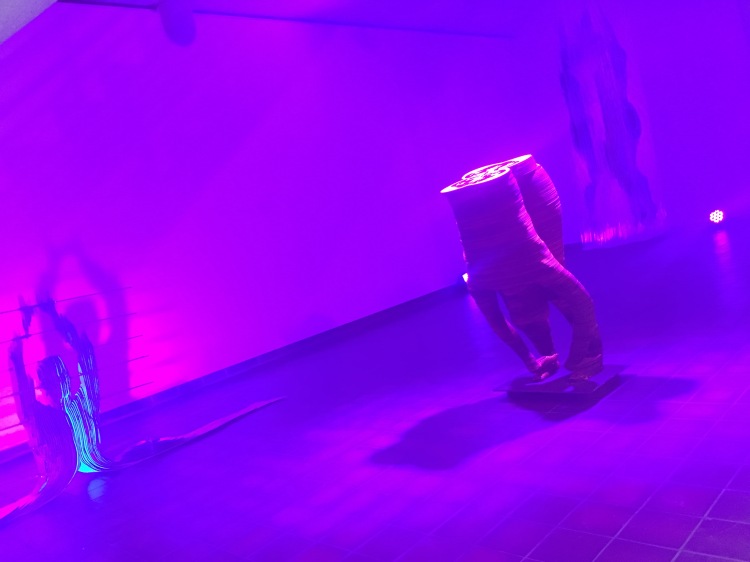Have you always wondered what it would be like to attend an art exhibit ? Well, for the first time, I attended a free art exhibition held at the Fine Arts Building (FAB) Gallery at The University of Alberta.
Tanya Harnett’s Attention Please showcased two main bodies of work including persona grata and Scarred Scared Water.
Harnett is an associate professor and visual artist in the Department of Arts & Design.
In a recent video interview, Harnett stated that her work focuses on an individual’s identity. It targets the different ways in which we view ourselves as well as our various ideologies. Harnett shed light on First Nations social issues and narratives as a person of settler heritage (she’s also Irish and English). Therefore, she explores her history and raises concerns for the future. In particular, piece “FLAG” in the persona grata series specifically looks at Canadian identity from a First Nation point of view.

Through this piece Harnett challenges what it means to be ‘Canadian’ as well as having indigenous roots especially as Canada celebrates its 150th year in 2017. The question arises, how can both these identities be reconciled?
As you will see in the following images, Harnett uses her photographic skills to capture and explore identity. The persona grata series showcases a self-portrait suite which explores the difficulty in expressing self-identity. The Scarred Scared Water series shows portraits of contaminated water on First Nations territory.
Here are a few pictures of the different pieces;
PERSONA GRATA;
2005-2007 (ink jet print on paper)
TOP (L-R: All Over Andre, White, Bed, Camera)
BOTTOM (L-R: Repair, Glass, Clay, Broken Glass)

SCARRED SACRED WATER:
Lubicon Lake First Nation: Warning Oil Pipeline Spill in Creek, 2011 (Digital print on rag paper)
Lubicon Lake First Nation: Damaged Creek and Lake Access, 2011 (Digital print on rag paper)
Drift Pile First Nation: Drift Pile River From Swan Hills, 2011 (Digital print on rag paper)
Paul First Nation: 2005 Wabamum Clean-up Site of a 700,000 Litre Oil Spill, 2011 (Digital print on rag paper)
Alexis First Nation: Lac Ste. Anne Shoreline, 2011 (Digital print on rag paper)
Cold Lake First Nation: Damaged Spring at Blue Berry Point, 2011 (Digital print on rag paper)


Marilène Oliver’s Tagged is inspired by the medical use of MRI to trace certain proteins in the body using fluorescent tags. Oliver is a UK artist and associate professor in the Department of Arts & Design. Oliver states the inspiration for this body of work was her personal experience with ‘tagging’ when her mother who suffers from early onset Dementia took a DAT scan and her condition was confirmed through the MRI image obtained. Oliver states that she obtained a change in how people interacted with her mother after her diagnosis, as her interactions seemed to decrease and people that associated with her before were not so willing to do so anymore. Thus, she incorporates digital technologies, traditional print and sculptures to create amazing pieces.
As you enter the exhibit, the first piece you see mimics the fluorescent tag effect seen in MRI/PET/CT scans.
Her most recent piece “Forward Fold’ uses steel, laser-cut MDF, fluorescent paint and neon glitter to showcase a yoga position. In this position, you are able to take a closer more intimate look into the ‘sculpture’.

I got the sense that this might have been the centerpiece to Oliver’s work. The sculpture at first looks slightly gruesome as the position the sculpture is in looks awkward. But, once you get closer and see the intricate design within the sculpture you appreciate the piece more. This could relate to Oliver’s experience with her mother and the message she hopes to portray that as a society we need to do better to continue engaging with people suffering from Dementia. Their external might not be what we are used to but the essence of them still carries the personality they had before.
Here are a few pictures of the different pieces:
These art exhibits are a great way to get informed on social issues and appreciate the great work being done outside of the classroom. The two artists were able to effectively communicate their thoughts on social issues such as identity, reconciliation of two cultures in Attention Please as well as infusing two opposites fields in Medical imaging and the Arts to raise awareness on mental health diseases in Tagged. I would definitely recommend taking advantage of the opportunity to appreciate these works. Check out the Faculty of Arts website for more details on their upcoming art exhibits.
What are some of the art exhibits you have attended this past year, and what have you learnt from them?
Keep On Keeping On
Mo 🙂




This was so insightful
LikeLiked by 1 person
Thank you for reading! 🙂
LikeLike
Wonderful read… keep on keeping on
LikeLiked by 1 person
Thank you! And you too 🙂
LikeLike